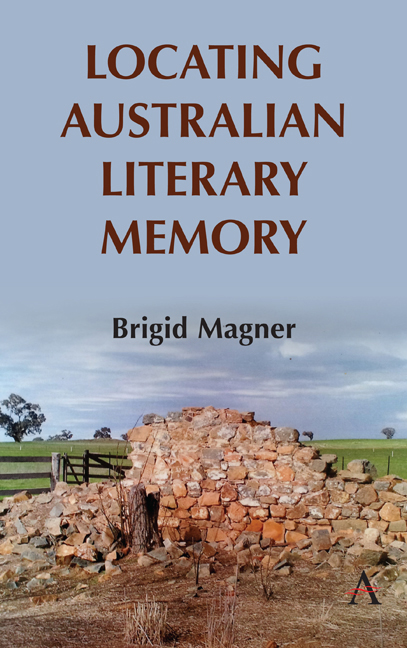Book contents
- Frontmatter
- Contents
- List of Illustrations
- Acknowledgements
- Introduction: Remembering Absent Authors
- Chapter One Adam Lindsay Gordon's Grave
- Chapter Two Joseph Furphy in the Riverina
- Chapter Three Henry Handel Richardson and the Haunting of Lake View
- Chapter Four Henry Lawson Country
- Chapter Five The Multiple Birthplaces of A. B. ‘Banjo’ Paterson
- Chapter Six Nan Chauncy's Sanctuary
- Chapter Seven Living Memorials: The Houses of Katharine Susannah Prichard and Eleanor Dark
- Chapter Eight Statue Mania: P. L. Travers and the Appeal of Mary Poppins
- Chapter Nine Kylie Tennant's Hut
- Chapter Ten The David Unaipon Monument at Raukkan
- Conclusion: Towards an Expanded Repertoire of Literary Commemorations
- Notes
- Index
Chapter Eight - Statue Mania: P. L. Travers and the Appeal of Mary Poppins
Published online by Cambridge University Press: 10 December 2019
- Frontmatter
- Contents
- List of Illustrations
- Acknowledgements
- Introduction: Remembering Absent Authors
- Chapter One Adam Lindsay Gordon's Grave
- Chapter Two Joseph Furphy in the Riverina
- Chapter Three Henry Handel Richardson and the Haunting of Lake View
- Chapter Four Henry Lawson Country
- Chapter Five The Multiple Birthplaces of A. B. ‘Banjo’ Paterson
- Chapter Six Nan Chauncy's Sanctuary
- Chapter Seven Living Memorials: The Houses of Katharine Susannah Prichard and Eleanor Dark
- Chapter Eight Statue Mania: P. L. Travers and the Appeal of Mary Poppins
- Chapter Nine Kylie Tennant's Hut
- Chapter Ten The David Unaipon Monument at Raukkan
- Conclusion: Towards an Expanded Repertoire of Literary Commemorations
- Notes
- Index
Summary
It's difficult to imagine a character more English than Mary Poppins, yet her creator originated from Australia. Widespread recognition of Pamela Travers (Helen Lyndon Goff) as an Australian writer has occurred only since her death in 1996. An expatriate from her 20s, Travers obfuscated the details of her childhood – or embroidered the truth – until later in life when she was more forthcoming about her formative years in Australia. It was in her final decade that Travers would discuss these matters openly with friends, but she usually offered an edited, or embroidered, version of events. Four towns – Allora, Maryborough, Bowral and Ashfield – now claim connections with Travers, in the form of Mary Poppins statues, preserved dwellings and the Mary Poppins Festival. This chapter explores the ways in which Travers's own identity is overshadowed by her character, who has enduring iconic appeal due to the success of the books and the Disney movies Mary Poppins (1964) and Mary Poppins Returns (2018).
Born on 9 August 1899 in Maryborough, Queensland, Helen Lyndon Goff moved with her family to another Queensland town, Allora, when she was three. After the death of her father at home in Allora in 1907, the family – her mother and two sisters – moved to a cottage rented for them by a wealthy aunt in Bowral, New South Wales. The Goffs lived there until 1917, though Lyndon attended boarding school in Normanhurst, a suburb of Sydney, from 1912 until 1916, returning to Bowral for the holidays. The family then moved to Ashfield in Sydney in 1917. Travers left Australia in 1924, for a career in Britain and the United States, to return only once in her life.
She began her literary career as a journalist and poet, turning to children's writing with her first Mary Poppins short story in 1926. Travers's second book, Mary Poppins (1934), about a supernatural nanny who arrives on the wind to take charge of the Banks children, was an immediate international success. The further adventures of Poppins and her charges were related in Mary Poppins Comes Back (1935), Mary Poppins Opens the Door (1943), Mary Poppins in the Park (1952), Mary Poppins in Cherry Tree Lane (1982) and Mary Poppins and the House Next Door (1988).
- Type
- Chapter
- Information
- Locating Australian Literary Memory , pp. 153 - 172Publisher: Anthem PressPrint publication year: 2019



